
|
 |
 |
c. h. kempton full range | gas lanterns
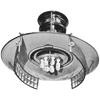
|
majestic
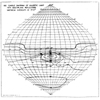
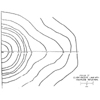 A circular lantern designed for central suspension (but later could be used with bracket arms).
Fitted with Multiplane mirror reflectors. Designed for B.S.I. installations of Classes F, E or D
(later Group 'A').
The reflectors could be adjusted in-situ by way of wing-nuts so that
the beam can be raised or lowered. The reflector constitutes almost a complete "cut-off" thus
almost eliminating glare. Can be fitted with refractors, stainless steel wing reflectors or "Multiplane" mirror
glass reflectors.
A circular lantern designed for central suspension (but later could be used with bracket arms).
Fitted with Multiplane mirror reflectors. Designed for B.S.I. installations of Classes F, E or D
(later Group 'A').
The reflectors could be adjusted in-situ by way of wing-nuts so that
the beam can be raised or lowered. The reflector constitutes almost a complete "cut-off" thus
almost eliminating glare. Can be fitted with refractors, stainless steel wing reflectors or "Multiplane" mirror
glass reflectors.
|
|
Majestic
|
1000 candle power
|
10-12 mantles
|
Top entry
|
1932 Catalogue
1937 Advert
1937 Programme
1937 Paper
1937 Journal
1938 programme
1939 programme
1945 advert
1951 book
|
|

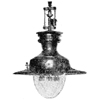
|
Kemborn
A circular lantern designed for central suspension. Fitted with Multiplane mirror glass
reflectors. Has a similar appearance to the Majestic but smaller and used for the lighting
of secondary and residential roads (Group B). Can be fitted with refractors,
stainless steel wing reflectors or "Multiplane" mirror glass reflectors. Gives an output of
1200 to 2400 lumens. Design slightly changed post-war.
|
|
Kemborn
|
400 candle power
|
4-6 mantles
|
Top entry
|
1932 catalogue
1937 advert
1938 programme
1939 advert
1939 programme
1945 advert
|
|
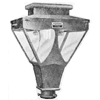
|
Kempar
Provisional British Patent Application: 1938/33
Registered Design: 779715
A low pressure gas unit for artistic and residential lighting. Called the "Kempar Two-Way Lamp" in
1945.
|
|
Kempar
|
??? candle power
|
2 x 2-5 mantles
|
Top entry
|
1936 advert
1945 advert
|
|
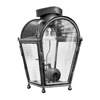
|
Starlyte
Of simple and efficient design, the lamp has a high candle power and is
suitable for the lighting of thoroughfares with wide spacing of lamps. Modern development
based on the conventional square lantern, and incorporates the use of two fixed mirror glass
faceted reflecting elements. Recommended for the lighting of roads in rural areas where
economic considerations dictate the need for using greater spacings than is usually considered
good practice. In 1938, a new range of fittings, having better distribution characteristics has been
introduced. Three and four-way reflecting elements are being designed.
Available in two sizes for output of 800 to 1800 lumens. Modern development of the
Square Lantern. Angular designations stated on the top of the lantern on raised blocks - a symmetrical
180° distribution was available. Also called the "Kemptolyte."
|
|
Starlyte
|
??? candle power
|
2-4 mantles
|
???
|
1937 advert
1937 programme
1938 advert
1938 programme
1939 advert
1939 programme
1945 advert
|
|


|
triumph
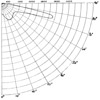 Designed to light Group "A" Roads to the requirements of the MOT Final Report. It is a cut-off fitting
having a useful flux distribution (3800-5800 lumens), the controlled part of which can be focussed in-situ to obtain a high and
even degree or road brightness to be obtained. The zone between 70° and 85° is controlled by means
of mirror reflectors. Provision is made for lateral adjustment to meet the
requirements of road width, spacing, etc.
Designed to light Group "A" Roads to the requirements of the MOT Final Report. It is a cut-off fitting
having a useful flux distribution (3800-5800 lumens), the controlled part of which can be focussed in-situ to obtain a high and
even degree or road brightness to be obtained. The zone between 70° and 85° is controlled by means
of mirror reflectors. Provision is made for lateral adjustment to meet the
requirements of road width, spacing, etc.
The lantern consists of a rectangular copper housing in which two sets of mirror glass reflectors are
arranged with their main (centre) mirrors parallel to the major horizontal axis of the burner, the mantle
nozzles of which are arranged in staggered line formation, and are usually 12 in number. The two reflecting
systems consist of a set of 3 curved glass mirrors fixed on a sheet metal back plate which is attached my
means of hinges to the lantern casing. A simple positive adjuster permits rapid vertical focusssing of
the controlled light beams between the angles of 70° and 80° and adjustment can be made to give
up to 25° horizontal bias from each set of mirrors, whilst the lantern is designed to give a complete
cut-off at 90° with the vertical. The air and gas adjusters are of conventional design, and are
accommodated in the roof of the lamps where they are readily accessible. The construction of the lamp
is such that complete access to the light chamber for maintenance purposes is obtained by opening the
two hinged glass frames which form the lower lantern casing, and there are no interior fittings to hinder
lantern cleaning.
|
|
Triumph
|
??? candle power
|
12 mantles
|
Top entry
|
1938 advert
1938 programme
1939 advert
1939 programme
|
|
|
|
Heathfield
Can be fitted with refractors, stainless steel wing reflectors or "Multiplane" mirror
glass reflectors.
|
|
Heathfield
|
??? candle power
|
??? mantles
|
??? entry
|
1938 programme
1939 programme
|
|
|
|



